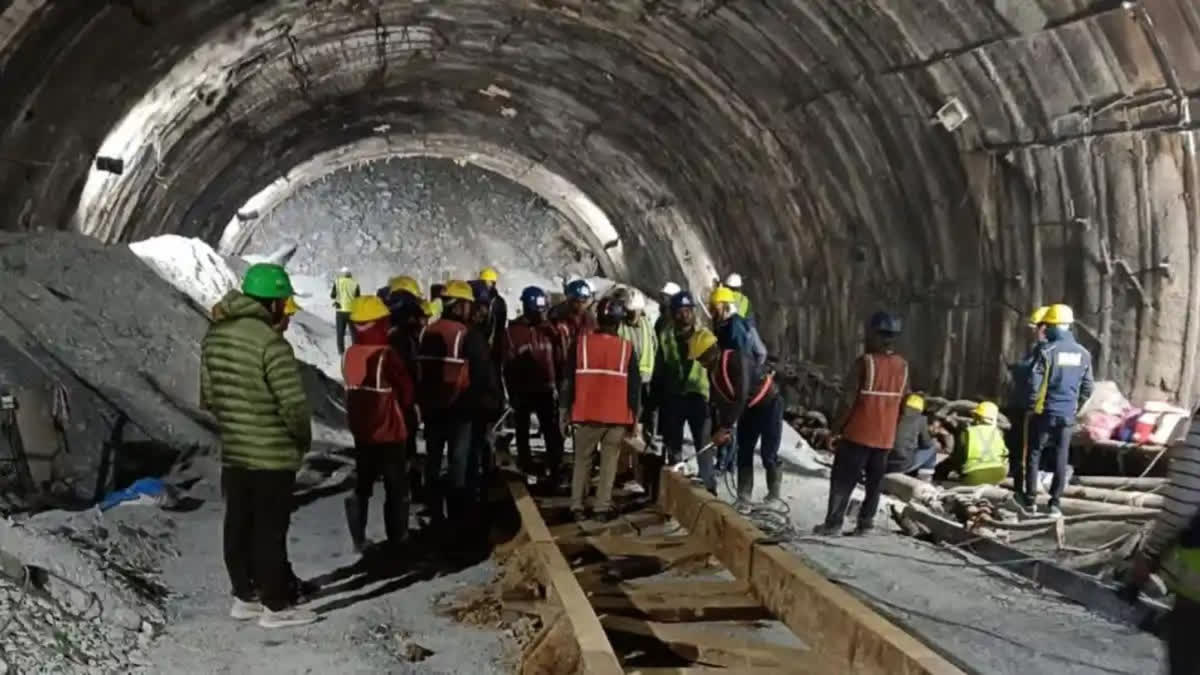New Delhi: Months after the horrific incident where 41 workers were trapped under the debris of the collapsed section of Uttarkashi’s Silkyara tunnel, a Parliamentary Committee has suggested to the Ministry of Road Transport and Highways (MoRTH) to implement a stringent maintenance schedule, including inspections for structural integrity, drainage systems, and ventilation to identify and rectify issues promptly.
The committee chaired by Rajya Sabha MP V Vijayasai Reddy in its latest report said that the government must employ sensors and monitoring technologies to continuously assess structural health, detecting any potential weaknesses or anomalies early.
“The tunnel forms a crucial segment of the Brahmakhal-Yamunotri section of the National Highway, a part of the government’s Char Dham road scheme. Unfortunately, the very structure meant to enhance connectivity through an extensive 889-kilometer road network, has become a site of tragedy,” the committee said in its report highlighting the shortcomings of the ministry while undertaking major infrastructure projects.
It said that there is also a need for training personnel in tunnel management and emergency response procedures so that such incidents do not occur in the future.
The Parliamentary Committee on Transport, Tourism and Culture said that the Ministry must develop and regularly update emergency response plans specifically tailored for road-related disasters and ensure that these plans are well-communicated and understood by relevant authorities, first responders, and the public.
It also suggested incorporating resilient design principles when planning and constructing roads which include using durable materials, proper drainage systems, and considering the local climate and geological conditions.
“The road safety audit must be carried out at every stage of the DPR preparation including feasibility stage, preliminary design stage and final stage to ensure that the safety is not compromised at any stage,” the committee said.
Suggesting to identify vulnerable sections and prioritize them for preventive measures, repairs, or upgrades, the committee said that the Ministry should establish a rigorous schedule for regular maintenance and inspections of roads.
Highlighting that natural calamities pose significant challenges to the operation and maintenance of NHs, the committee observed that hilly states like Uttarakhand, Himachal Pradesh and Sikkim are prone to natural disasters like earthquakes, floods, cloudbursts, which cause a severe damage to highway infrastructure, including roads, bridges, and toll plaza facilities that leads disruption of traffic flow, closure of highways.
The Ministry in its action taken report said that National Highway Authority of India (NHAI) has started adopting sustainable and environmentally friendly processes while constructing highways in hilly roads by fulfilling all the statutory conditions of MoEFCC & other agencies, such as proposing tunnel via ducts wherever feasible instead of hill cutting and filling, slope stabilisation etc.
The Ministry said that a total of 68 tunnels (under construction/under DPR) have been proposed in the State of Himachal Pradesh by NHAI. “These tunnels will not only prevent the seasonal blocking of roads due to landslides but is also an environment friendly method of road construction which involves less tree cutting and less damage to the environment as compared to the conventional method of road construction in hilly areas,” the official further informed.
Officials from the MoRTH informed the committee that NHAI has taken many new eco-friendly initiatives such as cut & cover tunnel, usage of geo-polymer technology, hydro-seeding for natural development of plants & shrubs on slope surface. During the recent unprecedented heavy rainfall in the state of Himachal Pradesh, NHAI ensured that the NHs are opened for traffic in minimum possible time. The stretch between Kullu-Manali which was damaged completely by heavy floods at several locations was opened to all types of traffic in minimum possible lime. Similarly the stretch between Shimla and Parwanoo was also damaged and blocked due to landslides at several locations and the traffic on the same has been made operational through at least 2 lanes in minimum possible time.
The Ministry while making its statement further admitted that on the night of October 3, 2023, the South Lhonak Lake in North Sikkim breached, causing a Glacial Lake Outburst Flood (GLOF).
“Teesta III dam producing 1,200 MW electricity, the biggest hydropower project in Sikkim, located approximately 60 kilometres downstream of the lake, in Chungthang town of Mangan district, was decimated by the GLOF. It also unleashed devastation on downstream areas of the dam. The flood has caused severe damages to NHs in the State of Sikkim,” the Ministry said.
Several portions of the damaged area have already been restored and more restoration work is going on in other areas, the Ministry said.
Read More
- Investigation Report Reveals Critical Lapses In Silkyara Tunnel Accident
